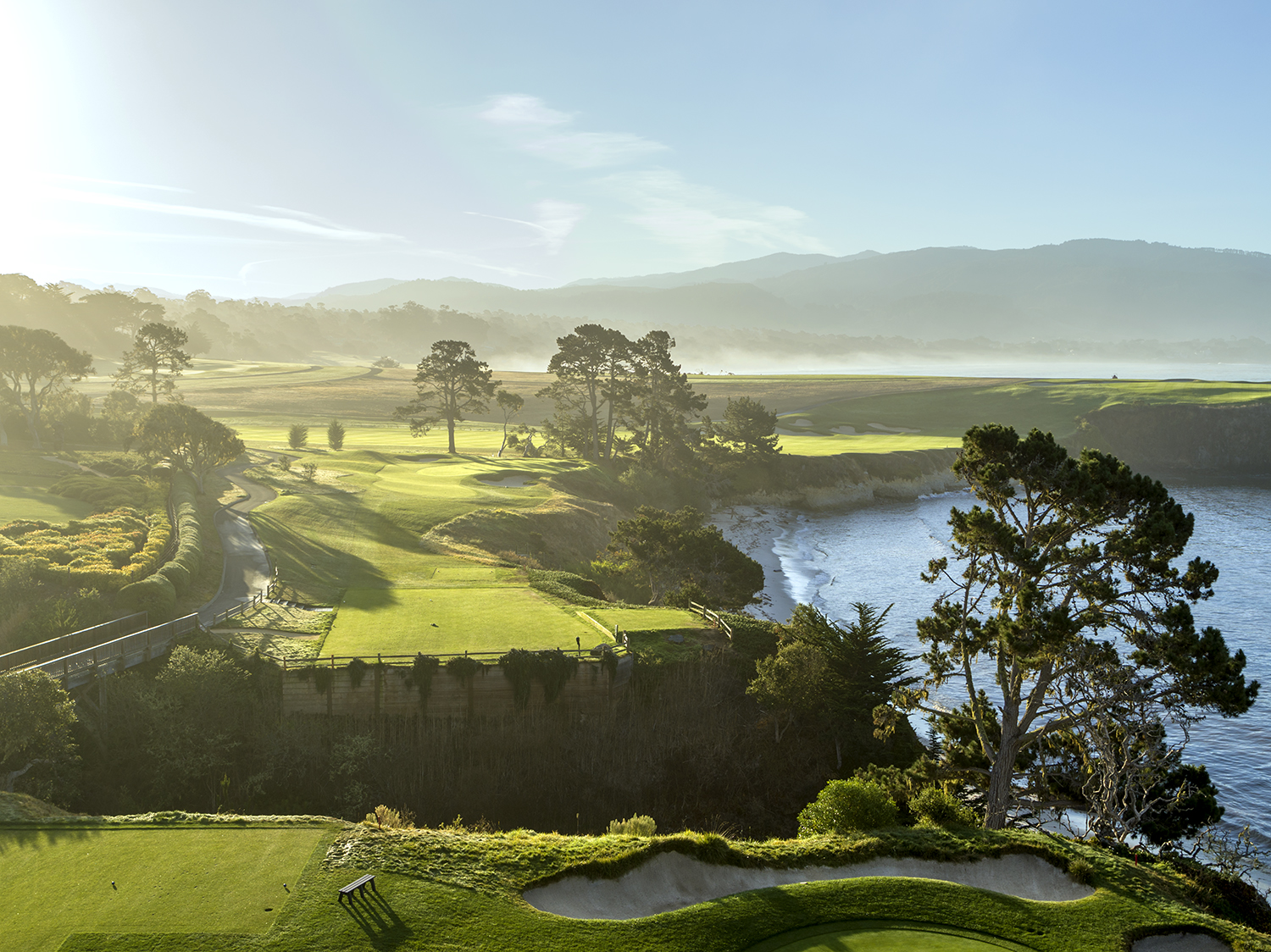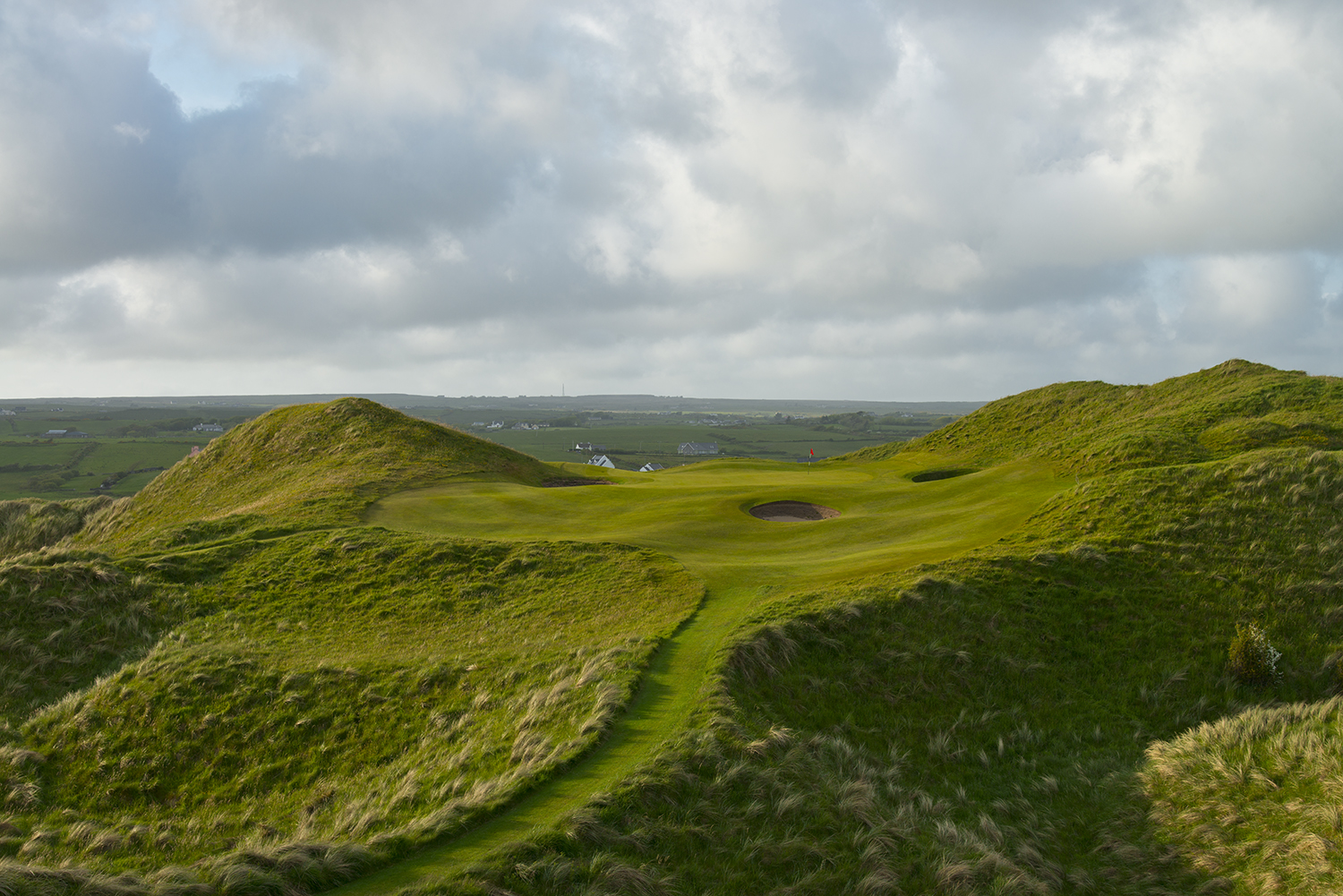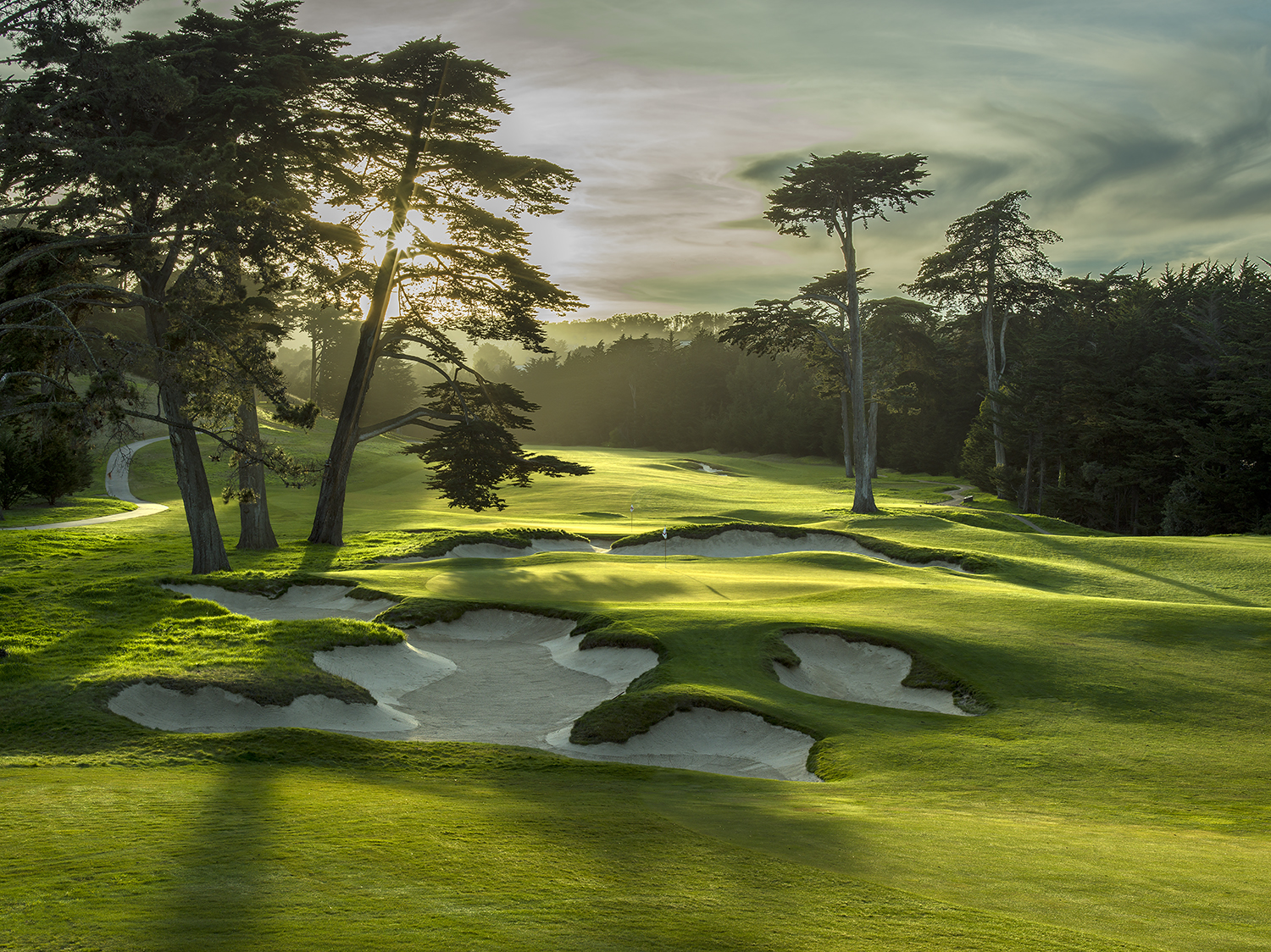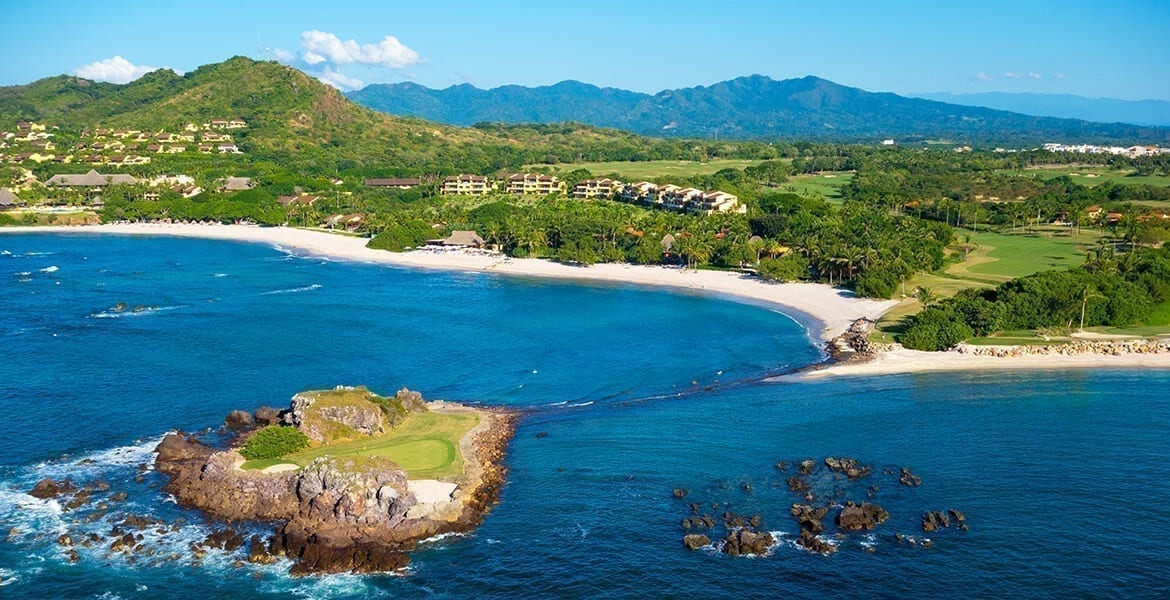Some golf courses are born great. Others have greatness thrust upon them. Still others must weather storms of criticism and significant design tweaks to finally find their proper place in the rankings. Dozens of outstanding courses have evolved with major alterations since they first opened for play. A select few have actually abandoned original holes—for a variety of reasons—and replaced them with entirely new ones.
Here then are the top courses in The LINKS 100 world rankings that feature replacement holes built in the last 30 years.
Royal Portrush (Dunluce), 7th and 8th holes
Always regarded as among the top 20 courses in the world, Portrush chose to kick it up a notch when the R&A awarded it the Open Championship for 2019. Its one weak link—two, actually—were its two closing holes, long and dull, atop flattish ground. At the suggestion—some would say insistence—of the R&A, the club engaged architects Tom Mackenzie and Martin Ebert to affect a fix. They abandoned the old closers and subbed in two new ones that are numbered 7 and 8 on the championship layout. Borrowing from the old 5th and 6th holes on the club’s adjoining Valley course, the new 7th is an uphill, 590-yard par-five that commences from an elevated tee and skirts a primary dune formation. The 430-yard par-four 8th is a risk/reward dogleg left that demands a daring drive over a chasm that flirts with a dune wall. The backdrop features the ruins of Dunluce Castle, perched on the cliff edge overlooking the shore. They will be on display once again in July, when Portrush hosts the 153rd Open Championship.
Pebble Beach, 5th hole
In 1915, shortly after Samuel F.B. Morse was retained by the Pacific Improvement Company to liquidate its holdings on the Monterey Peninsula, Morse began the task by selling off a five-acre parcel that overlooked Stillwater Cove. Prophetically, Morse said at the time, “I will probably regret this.” Soon after, Morse decided to develop the Pebble Beach portion of those holdings and commissioned an 18-hole golf course. He advised his principal designer, Jack Neville, a California Amateur champion who sold real estate for Morse, to maximize coastal views. Believing Morse could reacquire that parcel, Neville routed an ocean-edge par three as the 5th hole. But the owners refused to sell. Neville instead crafted an inland hole, an uphill thrust through the woods of 166 yards that went away from the ocean. At long last, in 1995, heirs of the original owners sold the parcel back to Pebble Beach. Three years later, chosen architect Jack Nicklaus grafted an entirely new hole, measuring more than 190 yards, on the edge of the bay—fulfilling Morse’s edict to get every hole possible on the coast.

Lahinch (Old), 8th and 11th holes
Lahinch charms with titanic sandhills, a superb architectural pedigree, and stunning views of the Atlantic. Old Tom Morris’s 1893 design, coupled with Alister MacKenzie’s 1927 renovation and Martin Hawtree’s 2003 restoration form a seamless fit on ideal terrain, even as relics such as the par-five 4th (“Klondyke”) and par-three 5th (“Dell”) wow with their blind, old-fashioned quirk. Toss in MacKenzie’s drivable par-four 13th, an intimate in-town setting, and goats that act as weather barometers for an utterly enticing package. Hawtree’s work from 1999–2003 included rerouting four holes and creating two new par threes, the 166-yard 8th and the 170-yard 11th. The former replaced what had been the 157-yard par-three 3rd. In its stead, the 8th is infinitely more compelling, a slightly uphill shot to a green saddled between dunes. The putting surface is guarded left and right by solitary bunkers and by one additional bunker cleverly placed in front of the green, but not flush with it. MacKenzie’s original sat lower and to the right. Hawtree’s new 11th has been especially well received, even though it replaced a shorter MacKenzie hole that featured a superbly contoured green. Created to provide more room—i.e., a safer playing environment in the modern era—the new 11th plays half a club downhill amid wildly undulating broken ground, with the sea beyond the green.

Royal Birkdale, 15th hole
History repeats itself at storied Royal Birkdale, home to 10 Open Championships. Ahead of its 11th hosting in 2026, the course will debut a brand-new par-three hole—just as it did ahead of its third Open in 1965. On that occasion, Fred W. Hawtree Jr., son of the original architect Fred G. Hawtree, crafted the 183-yard 12th hole we know today with a hilltop tee box and a green nestled in tall dunes on the other side of a valley. Tom Watson, who won the 1983 Open here, called it one of the best par threes in the world. Now, there’s a new contender for best par three on the back nine. Opening this spring is a new hole from architect Tom Mackenzie of Mackenzie and Ebert, the 15th, which measures 237 yards from the back Black tee. The idea was to introduce more variety to the set of par threes. This one plays in a different direction from the other three par threes, (4, 7, and 12) and can accommodate a running shot, to a long green. The hole often plays downwind and features Royal Birkdale’s legendary art deco clubhouse in the background. Dropped is the old 542-yard par-five 15th, which becomes the new 600-yard par-five 14th, a hole that plays about 50 yards to the right of the old hole. The new green resembles the old one, but with more cuppable spots. Also sidelined was the 200-yard par-three 14th. The old 14th green becomes a short game area.
California Golf Club of San Francisco, Five Front Nine Holes
Forget the unwieldy name—those in the know simply call it “Cal Club.” Originally routed by Scotsman Willie Locke, but constructed in 1926 by A. Vernon Macan, Cal Club received the Alister MacKenzie bunker treatment two years later. A mandated road expansion squeezed the course in the 1960s, costing the club its first green and entire 2nd hole. Robert Trent Jones Sr. attempted to shoehorn in replacement holes, while keeping the practice range location intact, but some of the early character was inevitably lost. In 2005, Kyle Phillips won the bid to renovate and restore and in 2007, his brave choices—five new holes—and inspired execution won Cal Club a legion of new fans. Holes 3, 7, and 8—all Phillips originals—in particular wowed architecture critics, notably the 411-yard par-four 7th. Phillips chose to utilize 17 unused acres in the middle of the property to create the hole, which forced the club controversially to relocate its practice range away from the clubhouse. Yet, the downhill, Cape-style hole that swings hard to the right was so well received—a thrilling risk/reward beauty in the MacKenzie mold—that any range-related controversy abated.

Waterville, 6th and 7th holes
Prolific Irish architect Eddie Hackett had carved out the Emerald Isle’s most spectacular and formidable championship test at the time of Waterville’s opening in 1973, delivering such memorable holes as the par-five 11th, “Tranquility,” which snaked between sizable dunes; the par-three 12th, “Mass Hole” which played over a hollow that once housed forbidden religious observances; and the par-three 17th, “Mulcahy’s Peak,” backdropped by mountains. Less admired was a stretch of flattish ground that was home to holes 6 through 9. Enter Tom Fazio in 2004, who rejuvenated a tired layout to surprisingly strong acclaim. Among Fazio’s fixes were replacement holes at 6 and 7. Hackett’s 6th had been a 371-yard par four, bunkered effectively in the landing area and at the green, but a hole that hardly inspired; his 7th measured 178 yards and featured what Tom Doak called a “hideous pond” in front of the green and unimpressive mounding around the green. In their stead, Fazio built a new 6th hole as a 194-yard par three (“Inny Valley”) that eases downhill, with a stream off the tee to the right. One lone bunker protects the green front-right, but the green contours and falloffs, especially to the left, make par a good score. The new par-four 7th, “Teacher,” measures 424 yards and sports two deep bunkers guarding the right side of the landing area and grass-topped dune mounds from start to finish. The slightly elevated green slopes back-to-front and right-to-left, with two pot bunkers protecting the left side.






i played pebble beach in 1975 and 1976.now i know why i didn,t remember the 5th hole it wasn,t there at that time. i also remember only paying 50 dollars with cart and my wife was able to ride along in the cart for charge and no golf clubs. i think many things have changed since 1976.